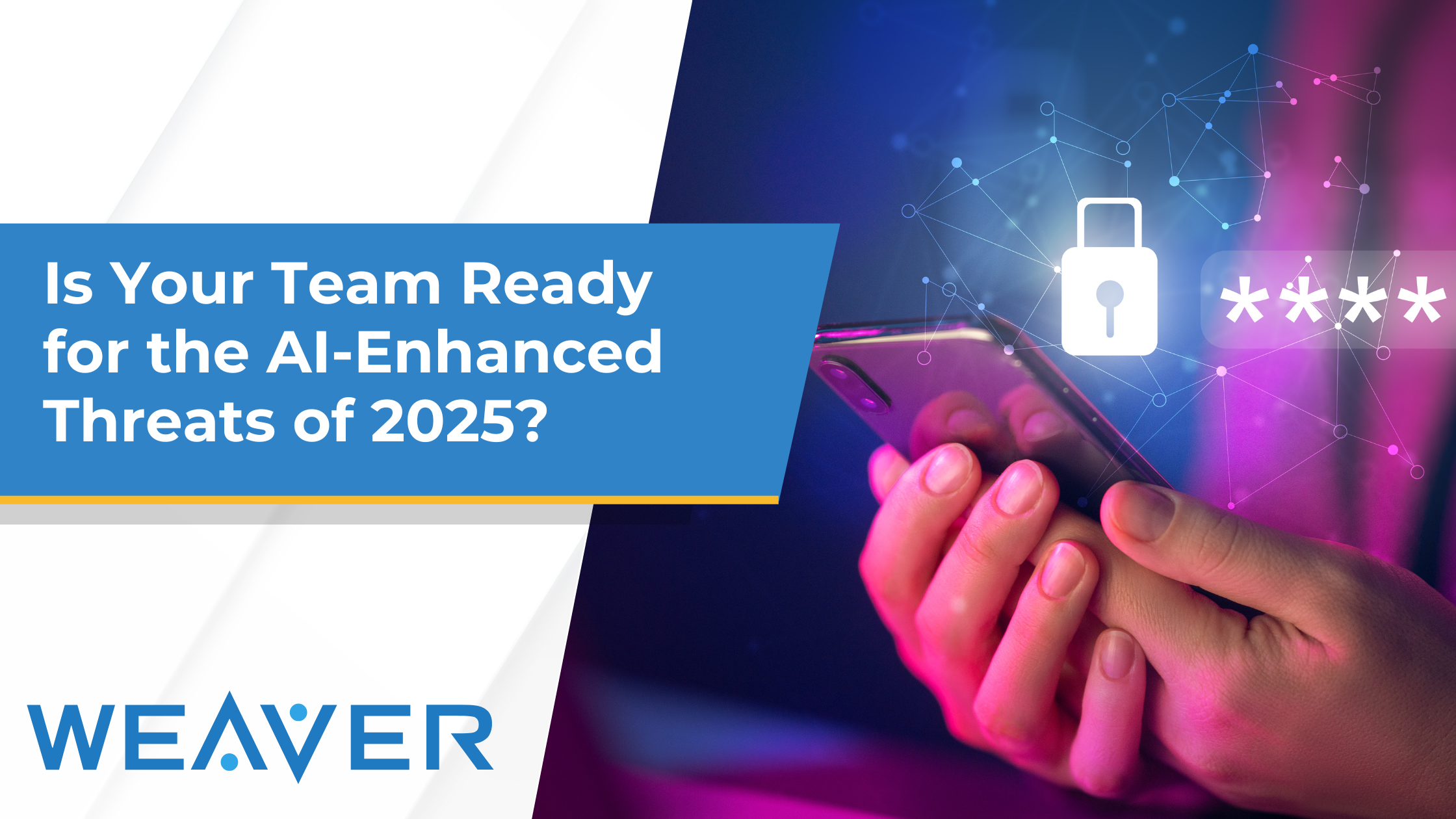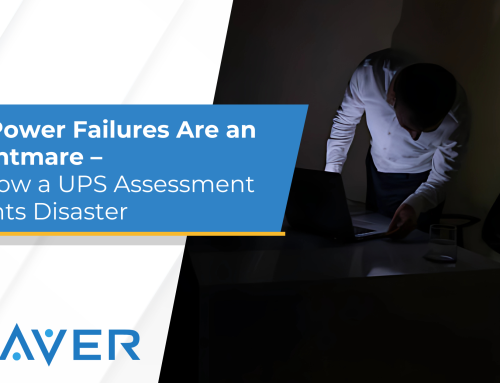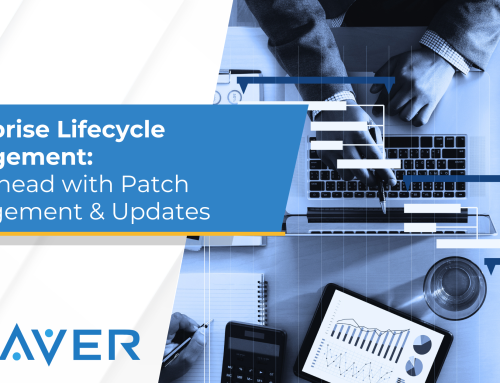As we move into 2025, businesses face a rapidly evolving cybersecurity landscape where artificial intelligence (AI) is both a powerful tool for defenders and a dangerous weapon for attackers. While AI is improving the ways companies detect and respond to cyber threats, it’s also being leveraged by cybercriminals to create more sophisticated attacks that are harder to detect and defend against.
Let’s dive into the emerging AI-driven threats your organization may face in 2025 and how you can equip your team to defend against them.
AI-Driven Threats on the Rise
1. Advanced Phishing and Social Engineering
AI can generate highly personalized phishing emails, texts, and even voice messages that mimic trusted sources with alarming accuracy. Attackers now use AI to analyze data from social media and public information sources, crafting messages that appear legitimate and relevant to their targets.
- Defensive Tip: Educate your team on recognizing red flags in unexpected communications, and implement multi-factor authentication (MFA) to reduce risks from compromised accounts.
2. Automated Malware and Ransomware Attacks
AI algorithms can now generate and deploy malware at unprecedented speeds, altering attack vectors to evade detection. Ransomware attacks, particularly, are becoming more adaptive, targeting specific organizational weaknesses and encrypting data before triggering automated ransom demands.
- Defensive Tip: Invest in advanced endpoint protection and regular vulnerability assessments to spot and neutralize threats quickly.
3. Deepfake Impersonation and Credential Theft
Deepfake technology, powered by AI, can now create convincing fake videos and voice messages that attackers use to impersonate executives or other trusted figures. These techniques can be used to trick employees into transferring money or sharing sensitive information.
- Defensive Tip: Ensure employees verify any unusual or sensitive requests through direct communication channels rather than relying solely on digital interactions.
4. AI-Augmented Distributed Denial of Service (DDoS) Attacks
AI is being used to amplify DDoS attacks, enabling attackers to identify network weak points and adapt attack patterns in real time. These AI-driven DDoS attacks can disrupt operations, particularly for businesses that rely on uninterrupted network access.
- Defensive Tip: Protect your network by working with a DDoS protection service and configuring your firewall to detect unusual traffic spikes.
5. AI-Powered Evasion Techniques
Modern cyber threats leverage AI to hide malicious activities within normal network traffic. This “hiding in plain sight” approach enables attacks to evade traditional security tools, making it difficult to detect intrusions.
- Defensive Tip: Invest in AI-based security tools that can identify anomalies in user behavior or traffic patterns, allowing for quicker detection of potential threats.
Steps to Prepare Your Team for AI-Enhanced Threats
1. Enhance Employee Awareness and Training
Traditional cybersecurity training is no longer enough. Employees need training specifically aimed at recognizing AI-driven threats, such as spotting highly personalized phishing emails or fake voice messages. Regular training sessions, including interactive simulations, are crucial.
- Key Focus Areas: Email and message authenticity, phishing awareness, and safe practices for handling sensitive requests.
2. Leverage AI in Your Security Infrastructure
To counter AI-enhanced threats, your cybersecurity systems should leverage AI as well. AI-powered security solutions can analyze vast amounts of data in real time, detect suspicious patterns, and automate response actions, helping to keep pace with modern threats.
- Recommended Tools: Endpoint detection and response (EDR), AI-powered network monitoring, and behavior analysis tools that help detect and respond to threats autonomously.
3. Implement Multi-Factor Authentication and Least Privilege Access
Reducing access to sensitive data and requiring multiple layers of authentication make it more challenging for attackers to succeed, even if they manage to bypass initial defenses.
- Best Practices: Limit access permissions based on job roles and require two or more forms of verification for accessing sensitive systems or data.
4. Conduct Regular Security Audits
Routine audits identify vulnerabilities before attackers do. By conducting a security audit at least annually, your team can pinpoint outdated or vulnerable systems, apply updates, and test the effectiveness of new security measures.
- Pro Tip: Engage with a third-party audit service to get an objective perspective on potential weak points in your defenses.
5. Stay Updated on Emerging Threats and Defensive Techniques
The AI-enhanced threat landscape is constantly changing, so regular learning is essential. Encourage your security team to stay informed on the latest AI-based threats and defense strategies by attending industry webinars, reading research reports, and participating in threat intelligence sharing networks.
Why Preparing for AI-Enhanced Threats Is Critical in 2025
AI is already reshaping how both attackers and defenders approach cybersecurity. Businesses that adapt to these changes proactively will have a significant edge in protecting their data, systems, and reputation. The cost of a data breach or ransomware attack—financially and in terms of brand reputation—is only growing, and with AI in play, attacks will likely become more frequent and difficult to stop.
By preparing now, you can empower your team to recognize and respond to AI-driven threats, securing your organization against what 2024 has in store.
Final Thoughts: Security Is a Shared Responsibility
While advanced security tools play a critical role in your defenses, a well-informed and vigilant team is your greatest asset in combating AI-driven cyber threats. Preparing your workforce, investing in the right technology, and adopting a proactive mindset can make a significant difference.
If you’re ready to elevate your cybersecurity strategy for 2025, reach out to Weaver Technologies. Our team of experts can help you assess your security needs, deploy advanced AI-powered solutions, and prepare your organization to stay secure in an evolving digital world.







